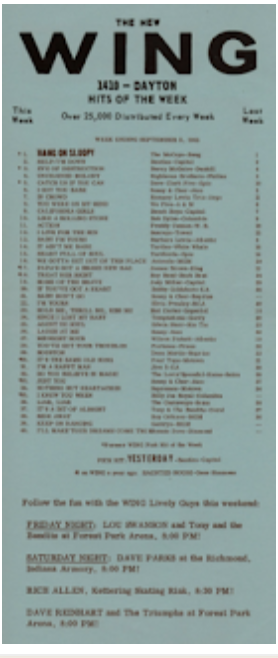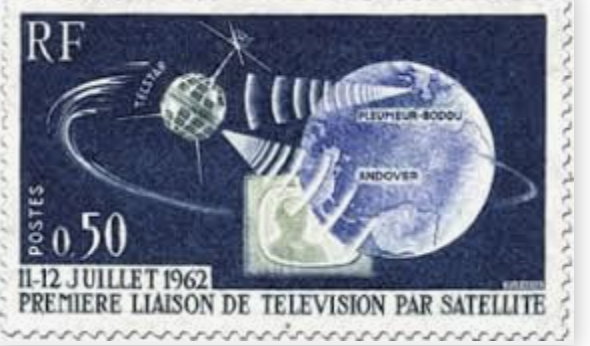It’s very strange, but I really wish it could be 1961 again.
Or at least 1962.
Sixty years ago.
I was 11 years old in 1961, and I went to school — sixth grade the first half of the year — across the street about half a block up from our house. It was the last year I ever was able to come home for lunch. I had sisters who were 9 and 4, a brother who was 2 and a baby sister who would be born in October.
We were overflowing our home in Huber Heights, Ohio, a three-bedroom ranch house in the oldest part of the largest all-brick housing development in America. It’s the part of what’s now a city that people refer to scornfully as “Huber-tucky,” and you have to understand the Ohio/Kentucky thing to get the joke.
My parents both worked for the Air Force at Wright-Patterson AFB, which was maybe the second most important air base behind Offutt Field in Nebraska, headquarters of the Strategic Air Command.
Near the end of the school year — May 5th, 1961 — they wheeled TV sets into all the classrooms so that we could see Alan Shepard become the first American in space. It was a very short flight. He just went up and came down. It would be another year till John Glenn, an Ohioan, because the first American to orbit the Earth.
It’s strange. I can remember the names of all five of my elementary school teachers in Huber Heights, from 1957 to ’61, but I remember almost none of my junior high teachers in Ohio or Virginia, and the only year I can get every one in high school is 12th grade.
I was still a good student then. I got all A’s through sixth grade (except for penmanship) and got mostly A’s and some B’s in my year and a half in junior high in Ohio.
Sixty-one was the first year I really started listening to the radio. I had a transistor radio that year, and the next year I won a table radio selling band candy. During the summer of ’62, I spent nearly every afternoon listening to the hits on AM/1410, “high-flying WING.” They counted down the Top 40 every weekday afternoon from 2-5, and I listened to most of it.

Things were changing so rapidly. We went from the oldest president ever to the second youngest, the first president born in the 20th century. He had a pretty young wife and two preschool children. And he was not only articulate, he was witty.
My grandmother was born in 1895. Before radio, television, air travel, automobiles, antibiotics, widespread use of electricity or telephones. People’s lives were closer to the 17th century than they were to what we have now. The average lifespan of white babies born that year was roughly 45 years.
Think about that. Half of those born in 1895 died before Pearl Harbor.
I was born in the last month of the 1940s, and white male babies born then could expect to live an average of 66 years. I have a set of encyclopedias my mother bought in 1951 or ’52. It was called The Book of Knowledge in the U.S., while in the country of its origin, Great Britain, it was called The Children’s Encyclopedia.
The set had been in my parents’ house all these years, and even though its about as obsolete as a 286 computer, I have it in my bookcase now. The set is fascinating in what it lacks.
George VI was king of England.
The U.S. flag had 48 stars.
Man had yet to put any astronauts, cosmonauts or even satellites into space.
Airlines were still years away from using jets.
Telephone calls overseas still require use of a cable on the bottom of the Atlantic Ocean. Radio broadcasts had to use shortwave, and television broadcasts from Europe meant someone getting on a plane in London or Paris and bringing the film to New York.
Changing that last one might have been the coolest thing that happened in 1962. The U.S. launched the first Telstar satellite on July 10th, and we were told that very soon, phone calls, radio broadcasts and even television would become a lot easier.
It took a while. The original satellite wasn’t in a geosynchronous orbit, so it only worked when it was over the Atlantic Ocean. Eventually, though, we saw news of the world, sports, and yes, the War in Vietnam in a timely fashion.
More than 20 Telstars have been launched, and even though the first one stopped working many years ago, it’s still up there orbiting the Earth every 2 1/2 hours.
A lot has changed in 56 years. WING radio is all sports now, and the school I attended in fifth and sixth grade has been torn down and a new one built. Huber Heights is a city now, and Interstate 70 goes east to west just a few hundred yards north of our second house.

But 1962 was so cool. Ohio State and Cincinnati — two schools each about an hour from us — played for the NCAA basketball title. Even better, Dayton won the NIT. I saw “How the West Was Won” in one of the only Cinerama theaters in the country. I spent two weeks at camp at summer, one at YMCA camp and the other at church camp. I finally taught myself to swim.
And that fall, as I lay in bed with my radio turned down low, I heard one of the coolest instrumentals ever.
“Telstar,” by a one-hit wonder group called the Tornadoes, was a song for the times.
And what times they were.
Nothing did more in one launch to shrink the world than that one satellite.

